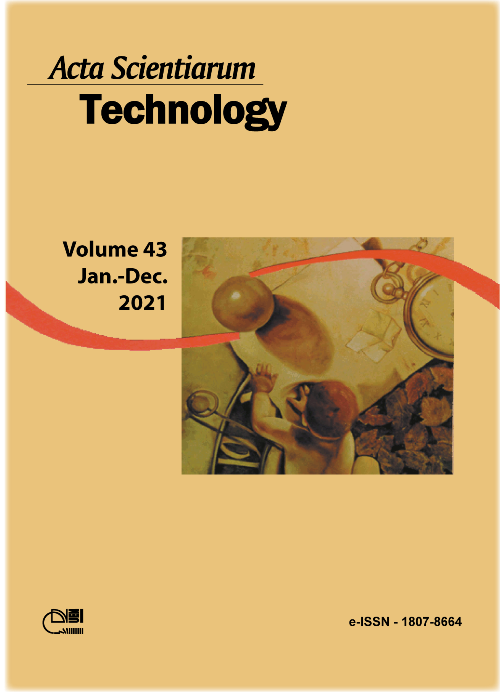Bioactive compounds in the leaves of Baccharis dracunculifolia: extraction process and characterization
DOI:
https://doi.org/10.4025/actascitechnol.v43i1.49826Keywords:
biological activity; experimental design; leaf extracts; natural products.Abstract
Baccharis dracunculifolia has been used in popular medicine because of its bioactive properties, which include anti-inflammatory, antiulcerative and hepatoprotective potentials. A 2³ central composite rotational design was used to define the best conditions for extracting the bioactive compounds from the leaves of Baccharis dracunculifolia. The parameters studied included the solvent concentration, time and temperature of extraction and the influence of these on the total phenolics content and antioxidant activity. The best conditions were 95 % methanol (v/v), 20 min extraction time, and 70 °C temperature. Under the optimized conditions, high contents of total phenolic compounds (72.5 mg GAE g-1) and high DPPH (865.6 µmol TE g-1) and ABTS (331.11 μmol TE g-1) free radical scavenging capacity and a high ferric reducing antioxidant power (1558.00 μmol FeSO4.7H2O g-1), were obtained. The extract also showed promising anti-microbial activity, demonstrating fungistatic action against C. tropicalis and C. albicans (5 mg mL-1 and 7 mg mL-1, respectively) and bacteriostatic effect against Escherichia coli (60 e 70 mg mL-1), Salmonella enterica typhimurium (40; 60 and 70 mg mL-1) and Staphylococcus aureus (4 mg mL-1). HPLC-DAD analysis showed an extract rich in the phenolic compounds catechin (0.659 mg g-1), caffeic acid (1.135 mg g-1), p-coumaric acid (0.772 mg g-1), ferulic acid (6.24 mg g-1), pinocembrina (0.155 mg g-1) and rutin (0.037 mg g-1).
Downloads
Downloads
Published
How to Cite
Issue
Section
License
DECLARATION OF ORIGINALITY AND COPYRIGHTS
I Declare that current article is original and has not been submitted for publication, in part or in whole, to any other national or international journal.
The copyrights belong exclusively to the authors. Published content is licensed under Creative Commons Attribution 4.0 (CC BY 4.0) guidelines, which allows sharing (copy and distribution of the material in any medium or format) and adaptation (remix, transform, and build upon the material) for any purpose, even commercially, under the terms of attribution.
Read this link for further information on how to use CC BY 4.0 properly.











8.png)




